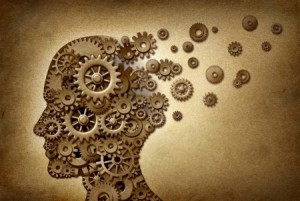The ADHD Fairy

In case you didn’t know, there is a risk of psychosis when using ADHD stimulant medications, such as amphetamine (Adderall, Vyvanse) and methylphenidate (Ritalin, Concerta). A study published recently in The New England Medical Journal indicated the risk was low, with about 1 in 660 patients who used prescription stimulants diagnosed with new-onset psychosis. The lead author of the study, Dr. Lauren Moran, said the risk was low enough that she could not recommend not prescribing Adderall. “But from a public health perspective, there’s so many millions of people being prescribed these medications that it actually leads to thousands of people at increased risk of psychosis.” Using data from the CDC on ADHD, that meant in 2016 about 5,730 children between the ages of 2 and 17 who were taking ADHD stimulants would be diagnosed with new-onset psychosis.
Medscape reported Dr. Moran said the takeaway point was “that it’s really important to screen for potential risk factors.” These risk factors could include a history of bipolar or other psychiatric disorder, a family history of psychiatric illness, or use of cannabis (See: “Gambling with Cannabis and Psychosis”). “If patients have those risk factors, I would shy away from using the amphetamines. You don’t want to have two things that could potentially further increase the risk for psychosis.”
Moran noted that there are many college students in the area around McLean Hospital and that in her anecdotal experience as a psychiatrist working in a unit that treats patients with psychotic disorders, she’s “been seeing cases of young individuals coming in with psychosis” after stimulant use.
Moran said at the beginning of their study, a patient had a 50-50 chance of getting Adderall or Ritalin. But there has been a dramatic increase in Adderall prescriptions, to almost four times as many prescriptions for Adderall. In her experience, ADHD patients hospitalized for psychosis recovered in two weeks; some took as long as two months. But Moran is not suggesting ADHD medications are too dangerous to prescribe. Rather, she’s trying to raise awareness. “Physicians need to be aware of this when prescribing and people who are getting these medications from friends in college need to know this is a risk.”
Speaking to STAT News, Dr. Anthony Rostain said he did not think the results of the Moran et al. study was shocking. The package insert already warns of a small risk of psychosis with ADHD stimulant medication. “It will just simply be important to mention to people that the amphetamine-based compounds have a slightly higher risk… I think the take-home here should be that everyone should be informed when they are starting a medicine about risks like psychosis.” One of the risk factors he gave for psychosis was abusing the drugs—crushing and snorting them. So the implication is that the individuals at risk are those who abuse this medication, which is admittedly an issue on college campuses.
But is that the real problem, namely that the people at risk are those who are abusing ADHD stimulants? First let’s consider the industry ties of the two doctors cited here. Rostain has been a consultant to Arbor Pharmaceuticals, an amphetamine maker, and to Shire, which sells Vyvanse and developed Adderall; Dr. Moran reported only receiving a grant from the NIMH to investigate the risk of psychosis with prescription stimulants. Is Rostain contributing to some misdirection of the issue because of his industry ties?
Did you know that so-called “challenge studies,” where amphetamine and methylphenidate were used to instigate symptoms of psychosis, were done in the name of science? Robert Whitaker co-wrote a series of articles that described how beginning in 1972, psychiatric researchers used amphetamine, methylphenidate and ketamine “to deliberately provoke psychotic symptoms in more than 1,200 schizophrenic patients.” In some cases, the level of psychosis experienced by these patients was called “severe.” Some of these experiments were conducted by prominent researchers at the National Institute of Mental Health. David Janowsky’s work established the idea that psychosis-inducing drugs “could be used as ‘challenge agents’ to turn patients into models for studying psychotic illnesses.”
Symptom-exacerbation experiments were pioneered by Dr. David Janowsky of Vanderbilt University. In 1974, he reported success in developing a new tool for studying schizophrenia. He found that giving schizophrenic patients methylphenidate (Ritalin) caused ”a dramatic intensification of preexisting symptoms, such as hallucinations and delusions,” and that amphetamine also exacerbated their psychosis. Both drugs are known to release dopamine, a messenger chemical in the brain, and Janowsky’s experiments provided indirect evidence that the biological mechanism of psychosis involved an overactive dopamine system.
Dr. Jeffrey Lieberman, currently the department chair of psychiatry at Columbia, did several challenge studies with methylphenidate. In a 1987 study, 34 stable outpatients receiving antipsychotics were given methylphenidate and then withdrawn from their antipsychotics. Three weeks later, they were given another infusion of methylphenidate. They were then followed up for 52 weeks or until they relapsed—in other words until their symptoms returned.
In a 1990 study, 38 patients who met the criteria for schizophrenia or schizoaffective disorder were given methylphenidate. These were patients experiencing their first acute psychosis. The methylphenidate produced an increased psychopathology seen in the worsening of their symptoms. And in a 1987 article, Lieberman and his coauthors commented that methylphenidate appeared to have a greater “psychotogenic potency” than amphetamine. They hypothesized there was a subgroup of schizophrenic patients who exhibited psychotic activation with psychostimulants. “This biologic phenomenon may be clinically exploitable and should be investigated further.” Also see “Psychiatry, Diagnose Thyself! Part 2” for more information on challenge studies.
MacKenzie et al. found an association between the use of stimulant medication and psychotic symptoms in children and adolescents at risk of mental illness. Psychotic symptoms were found in 62.5% of the participants who had taken stimulants versus 27.4% of participants who had not taken stimulants. All participants who had used stimulants and experienced psychotic symptoms were sons or daughters of a parent with either a major depressive disorder or bipolar disorder. “The association of current use of stimulants with current psychotic symptoms and the close temporal relationship between stimulant use and psychotic symptoms in youth who started and stopped stimulants indicated a potential causal relationship.” See “Tip of the ADHD Iceberg” for more information.
ADHD stimulants are addictive. Ritalin and Adderall are Schedule II controlled substances, meaning they are considered to have a high potential for abuse, with their use “potentially leading to severe psychological or physical dependence.” Methamphetamine adverse effects can include convulsions, memory loss, severe dental problems and even death. “Cocaine and potent stimulant pharmaceuticals, such as amphetamines and methylphenidate, produce similar effects.” The effects of amphetamines are similar to cocaine but occur slower and last longer.
Chronic abuse produces a psychosis that resembles schizophrenia and is characterized by paranoia, picking at the skin, preoccupation with one’s own thoughts, and auditory and visual hallucinations. Violent and erratic behavior is frequently seen among chronic users of amphetamines and methamphetamine.
A 2015 study by Clemow and Walker reviewed the literature on ADHD medication misuse. The authors found that elevations in brain dopamine levels seemed to be necessary to both their efficacy in ADHD and in their potential for abuse. The data suggested ADHD medication misuse was a common health care problem for stimulant medications, “with the prevalence believed to be approximately 5% to 10% of high school students and 5% to 35% of college students, depending on the study.” Conversely, nonstimulant ADHD medications did not suggest a potential for abuse. “In light of these findings, the data suggest a need for close screening and therapeutic monitoring of ADHD medication us.”
And if that is not enough to raise concerns with the use of amphetamine and methylphenidate to treat ADHD, there is evidence that challenges their long-term effectiveness. The National Institute of Mental Health (NIMH) funded a nationwide, long-term study of the effectiveness of stimulants in treating ADHD by many of the long-time advocates of stimulant medication. In 2007 the authors finally published their evaluation of long-term effectiveness. The Jensen et al. study concluded: “By 36 months, the earlier advantage of having had 14 months of the medication algorithm was no longer apparent.” The Swanson et al. study said: “All five propensity subgroups showed initial advantage of medication that disappeared by the 36-month assessment.”
So where does this leave us with regard to ADHD? Is it even a valid diagnosis? In Debunking ADHD, Michael Corrigan said ADHD diagnosis in its current form is a diagnosis of normal, using eighteen very generic, commonly observed childhood behaviors to justify giving the medications. “Coincidentally or conveniently, ordained by the all-knowing creators of ADHD as proof of ADHD’s existence, these eighteen childish behaviors … seem to drive parents and educators crazy.” ADHD is a negative label that some want you to believe is real. Like the stories of about unicorns, fairies and leprechauns, “the diagnosis of ADHD is a brilliant work of fiction.” In Our Post Human Future, Francis Fukuyama also suggested ADHD wasn’t a disease, but rather, “just the tail end of the bell curve describing the distribution of perfectly normal behavior.”
Young human beings, and particularly young boys, were not designed by evolution to sit around a desk for hours at a time paying attention to a teacher, but rather to run and play and do other physically active things. The fact that we increasingly demand that they sit still in classrooms, or that parents and teachers have less time to spend with them on interesting tasks, is what creates the impression that there is a growing disease.
For more information on ADHD, see: “ADHD: An Imbalance of Fire over Water or a Case of the Fidgets?”

